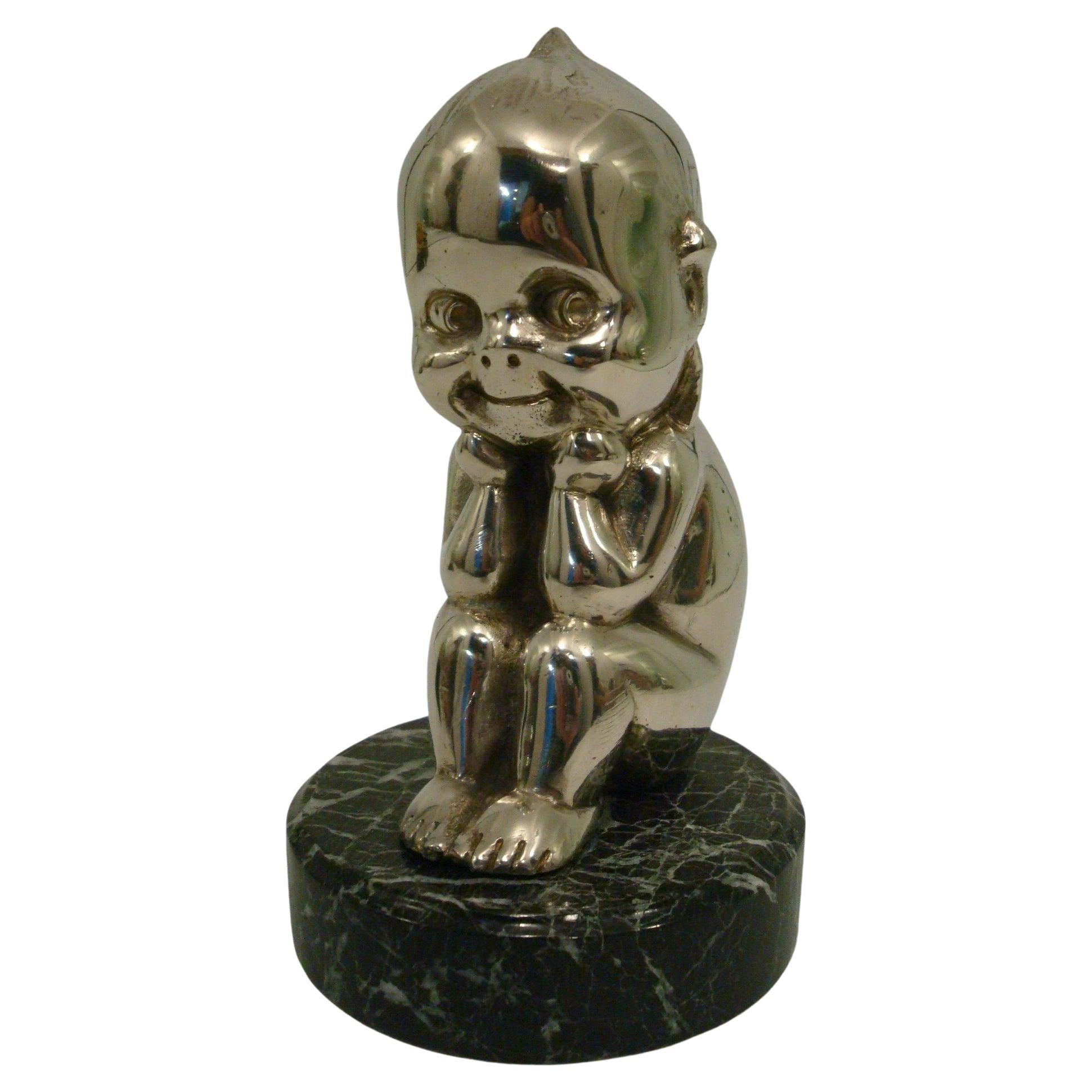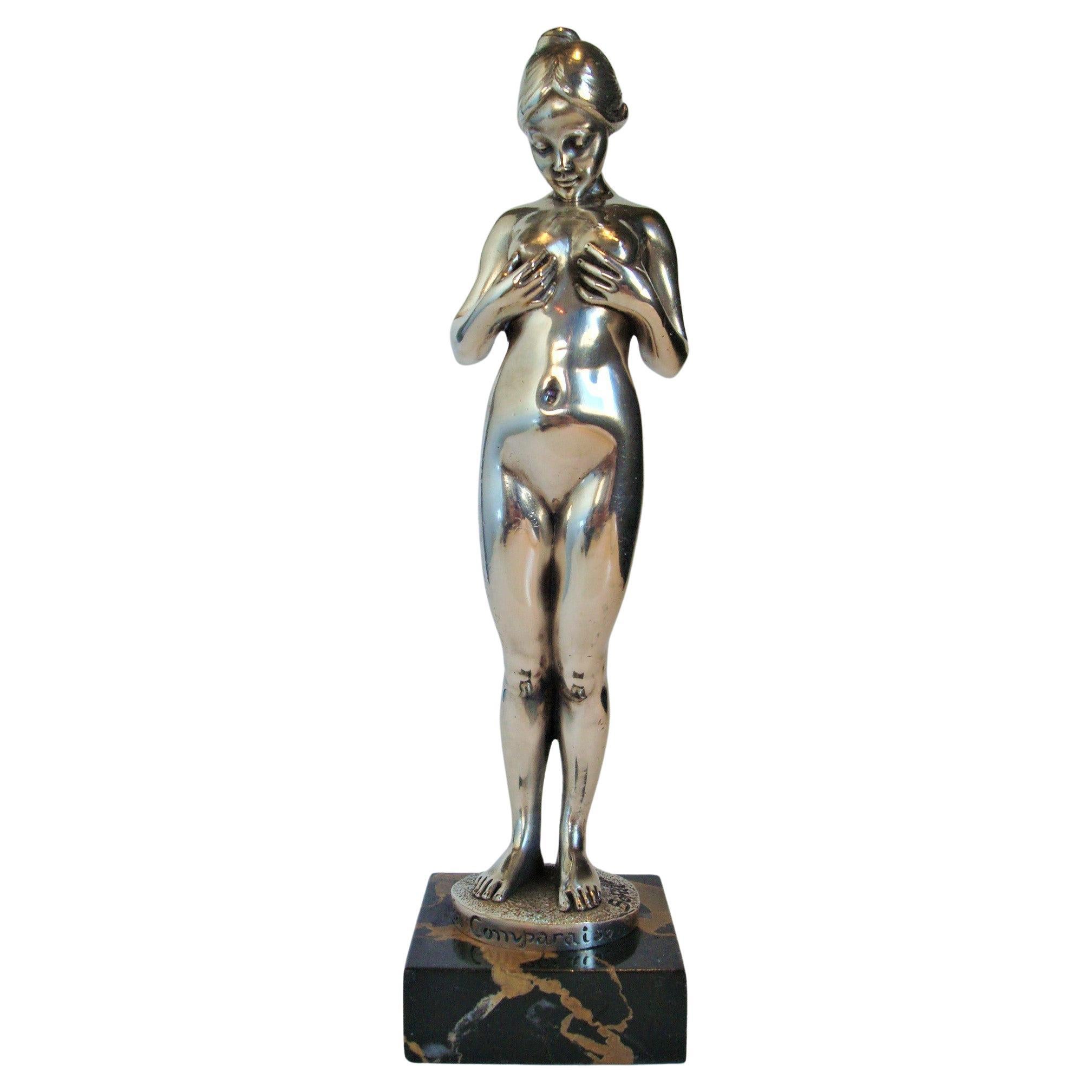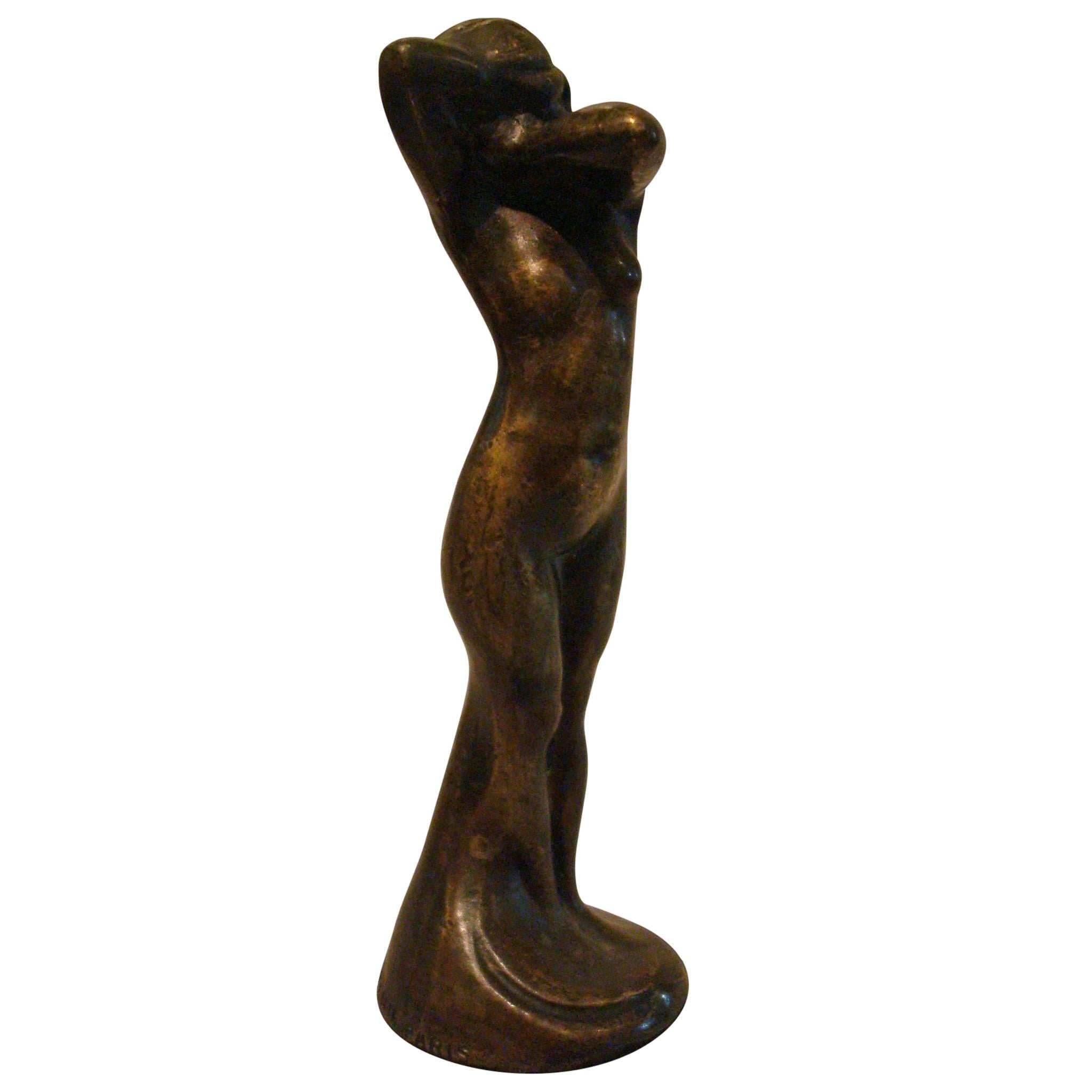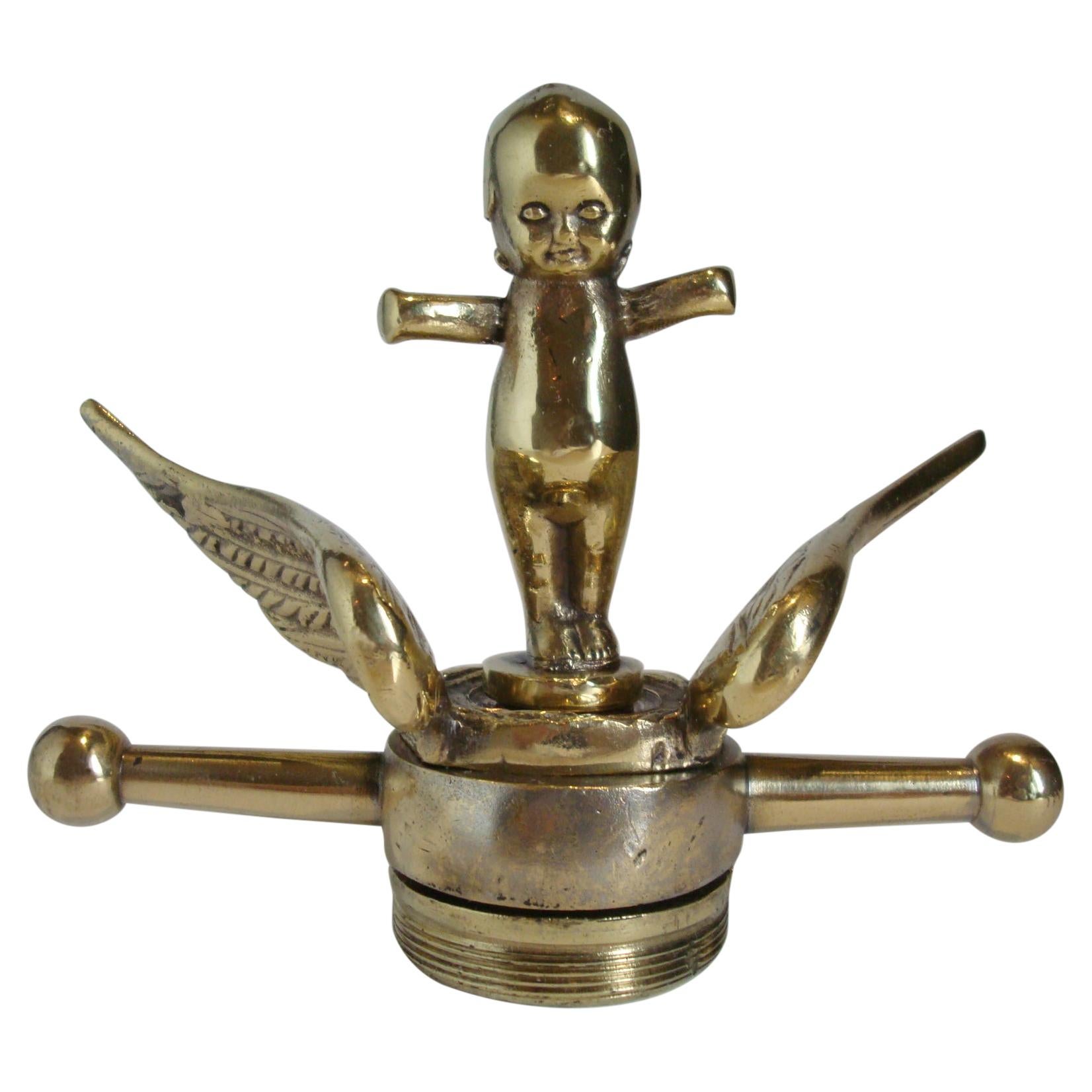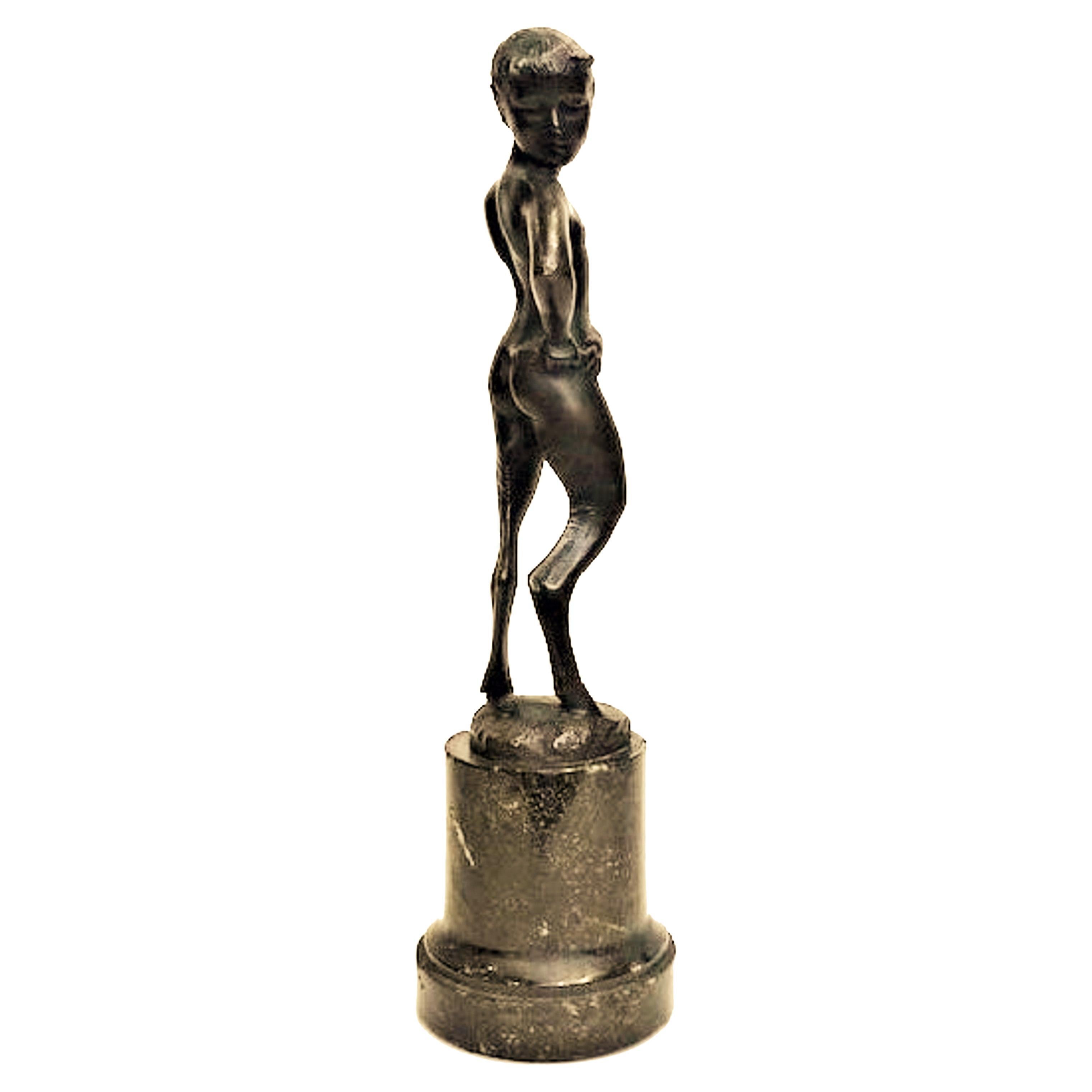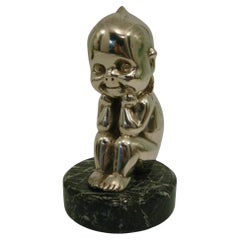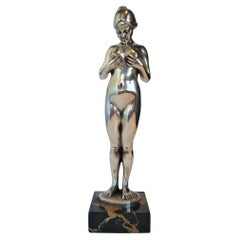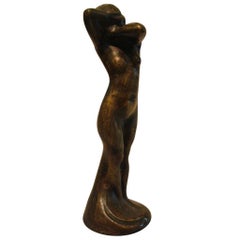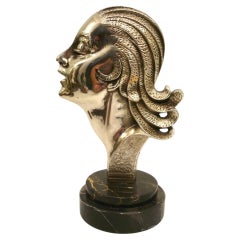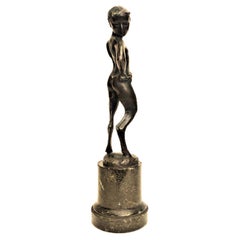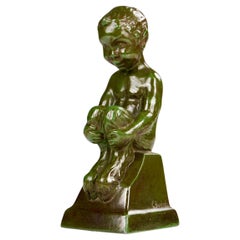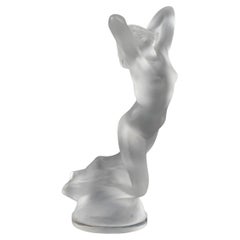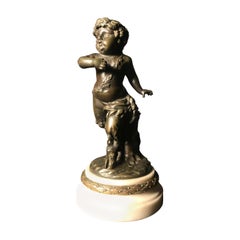Items Similar to Art Deco Silvered Bronze Faun, Car Mascot Hood Ornament, France, 1920
Want more images or videos?
Request additional images or videos from the seller
1 of 12
Art Deco Silvered Bronze Faun, Car Mascot Hood Ornament, France, 1920
$1,990
£1,530.84
€1,776.87
CA$2,806.38
A$3,143.61
CHF 1,651.14
MX$38,225.31
NOK 20,908.81
SEK 19,848.08
DKK 13,261.47
About the Item
Rare Art Deco silvered bronze statuette of a seated young boy Faun. Car mascot hood ornament. Figure mounted over a base. Perfect desk piece.
Signed 'Silvestre' with foundry marks for editions Susse Freres, Paris.
French, circa 1920.
We have specialized in the sale of Art Deco and Art Nouveau and Vintage styles since 1995. If you have any questions we are at your disposal. Pushing the button that reads 'View All From Seller'. And you can see more objects to the style for sale. Why are there so many antiques in Argentina?
In the 1880 – 1940 there was a grate wave of immigration encouraged by the periods of war that were taking place. 1st World War took place between 1914 and 1918 2nd World War took place between 1939 and 1945 The immigrants options were New York or Buenos Aires. Tickets were cheap and in Buenos Aires they were welcomed with open arms, as it was a country where everything was still to be done. Argentina was the country of new opportunities, labour was needed and religious freedom was assured, in many cases the of the family travel first until they were settled and then the rest of the family members join them. In the immigrant museum “Ellis Island Immigrant Building” in New York you can se the promotional posters of the boats that would take them to a new life. Between the years 1895 and 1896, Argentina had the highest DGP (gross domestic product) per capita in the world according to the Maddison Historical Statistics index, this situation arose due to the large amount of food being exported to European countries, which were at war. The Argentinean ships left the port of Buenos Aires with food, but they returned with furniture, clothes and construction elements, (it´s common to see this the old buildings of the historic neighbourhood of San Telmo, the beams with the inscription “Made in England)”, as well as many markets that were built in Buenos Aires, such us the San Telmo Market, whose structure was brought by ship and afterwards assembled in 900 Defensa Street. With the great influence of European immigrants living in the country, the children of the upper classes travelled to study in France, resulting in the inauguration of “La Maison Argentinienne”, on 27th of June 1928, in the international city of Paris, which hosted many Argentinians that were studying in Frace. It´s the fourth house to be built after France, Canada and Belgium, being the first Spanish-speaking one. Still in place today (17 Bd Jourdan, 75014, Paris, France). Many of the children of these wealthy families who attended international art exhibitions, museums and art courses abroad, took a keen interest in the European style. This is why Buenos Aires was at the time referred as “The Paris of South America”. Between the years 1890 and 1920 more than a hundred Palaces were built on Alvear Avenue the most exclusive avenue in Buenos Aires. Today some of these palaces have been transformed into museums, hotels and embassies. In the year 1936, the Kavanagh building was inaugurated, it was the tallest reinforced concrete building in South America. During 1994 the American Society of Civil Engineers distinguished it as an “international engineering milestone”, and it´s now considered a World Heritage of Modern Architecture. At the time was common to hire foreign architects such as Le Corbusier, who visited Buenos Aires/Argentina in 1929 and in 1948 he drew up the blueprints for a house built in La Plata City (which was declared a World Heritage Site). In 1947, the Hungarian architect Marcelo Breuer designed “Parador Ariston” in the seaside city of Mar del Plata. After an Argentinean student at Harvard University convinced him to come to Argentina. He worked on an urban development project in the Casa Amarilla, area of La Boca. The Ukrainian architect, Vladimiro Acosta, arrives in Argentina in 1928 and worked as an architect until que moved to Brazil. Antonio Bonet, a Spanish architect who worked with Le Corbusier in Paris, arrives in Argentina in 1937, where he carried out several architectural works and in 1938 designs the well-known BFK chair. Andres Kálnay, of Hungarian origin, made around 120 architectural masterpieces, among which the former Munich brewery stands out, he even made the furniture’s design. The German architect, Walter Gropius, director of the Bauhaus, lived in Argentina, where he wrote articles for “Sur” magazine and founded in Buenos Aires, an architectural firm with Franz Möller, who was also an architect, where he built two houses. At the same time several famous designers decided to immigrate to Argentina, among them we can find the well-known French designer, Jean-Michel Frank, who arrived in the country in 1940 and also worked for the Rockefeller family. Special pieces were made, which were sold exclusively in the country, such as the well-known German company “WMF”, who sold their products by catalogue, which were chosen by the ladies of high society in the list of wedding gifts, as well as the pieces designed by Christofle. The Swiss sculptor Alberto Giacometti, made special pieces for Argentinean mansions. In 1904 the first Jansen branch outside Paris was established in Buenos Aires, as the Argentinean clientele demanded a large amount of furniture, from the end of the 19th century to the mid-20th century. In 1970, the brand Rigolleau Argentina made pieces authorised by Lalique. The brands Maple and Thompson also set up shop in the country. The French plastic artist, Marcel Duchamp moved to Argentina in 1918-1919. Glass signed Gallé, Charder, Leverre, Schneider, Muller and other French firms. They were bought in flower shops and were given to ladies with beautiful floral arrangements. Some furniture manufacturers travelled to international fairs and bough the patterns to produce the furniture in Argentina, such as the furniture firm Englander and Bonta, who bought the patterns in Italy. It is worth mentioning that in Argentina we have the largest community of Italians outside of Italy, as it is estimated that 70 percent of the inhabitants have at least one Italian descendant, followed by Spanish immigrants. The most Important furniture stores in Argentina: Comte is founded in 1934 (under the direct management of Jean Michel Frank in 1940). Nordiska (Swedish company established in 1934). Churba in 1960, a company that brought foreign designers to present their furniture in the country: Denmark: (Arne Jacobsen, Finn Juhl, Bender Madsen, Ejner Larsen, Poul Kjaerholm, Hans Wegner) Sweden: (Hans Agne Jakobsson, Gustavsberg) United States: (Herman Miller) Finland: (Lisa Johansson, Folke Arstrom, Tapio Wirkkala, Alvar Aalto, Timo Sarpaneva) Swedish Factory: (Orrefors) Italy: (Littala, Vico Magistretti, Emma Gismondi, Gae Aulenti, Angelo Mangiarotti, Elio Martinelli, Gianna Celada, Angelo Mangiarotti, Mario Bellini, Carlo Scarpa) Finland: (Olivia Toikka) Plata Lappas (Lappas Silver): a goldsmith shop founded in 1887 in Argentina by Alcibiades Lappas of Greek origin. In 2019, in Argentina took place “the Art Deco world congress” . Argentina currently has more than 100 Art Deco buildings and another 90 Art Nouveau buildings throughout the city of Buenos Aires. Argentina is a country that has not been involved in many wars, which is why it has been a refuge for works of art and antiques from different periods of time, unlike European countries. That is way many collectors, museums and antique dealers from all over the world visit it, you should not miss the opportunity to visit this great country.
- Creator:Paul Silvestre (Artist),Susse Freres (Metalworker)
- Dimensions:Height: 5.91 in (15 cm)Diameter: 3.35 in (8.5 cm)
- Style:Art Deco (Of the Period)
- Materials and Techniques:
- Place of Origin:
- Period:
- Date of Manufacture:1920
- Condition:Wear consistent with age and use.
- Seller Location:Buenos Aires, AR
- Reference Number:1stDibs: LU2027345892232
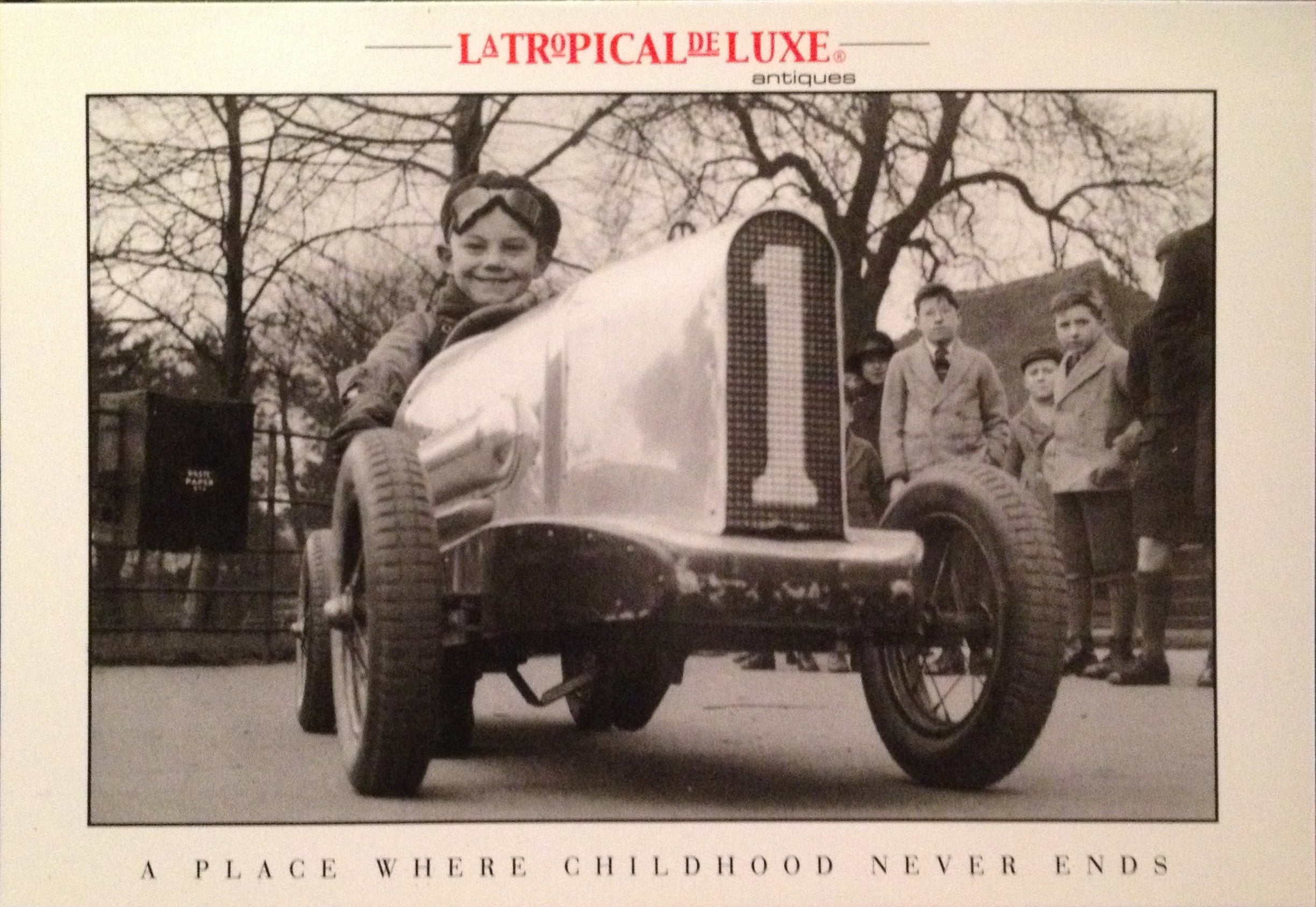
About the Seller
4.9
Vetted Professional Seller
Every seller passes strict standards for authenticity and reliability
Established in 2002
1stDibs seller since 2016
320 sales on 1stDibs
Typical response time: 1 hour
- ShippingRetrieving quote...Shipping from: Buenos Aires, Argentina
- Return Policy
Authenticity Guarantee
In the unlikely event there’s an issue with an item’s authenticity, contact us within 1 year for a full refund. DetailsMoney-Back Guarantee
If your item is not as described, is damaged in transit, or does not arrive, contact us within 7 days for a full refund. Details24-Hour Cancellation
You have a 24-hour grace period in which to reconsider your purchase, with no questions asked.Vetted Professional Sellers
Our world-class sellers must adhere to strict standards for service and quality, maintaining the integrity of our listings.Price-Match Guarantee
If you find that a seller listed the same item for a lower price elsewhere, we’ll match it.Trusted Global Delivery
Our best-in-class carrier network provides specialized shipping options worldwide, including custom delivery.More From This Seller
View AllSitting Kewpie or The Thinker, Silvered Bronze Car Mascot Hood Ornament, 1910´s
Located in Buenos Aires, Olivos
"Sitting Kewpie" or "The Thinker", Car Mascot Hood Ornament, 1910´s.
Made of silvered bronze, mounted over a green and white mrble base.
Can de used as a desk paperweight.
Originally appearing in the form of magazine illustrations between 1905 and 1909, Kewpie dolls...
Category
Early 20th Century American Art Nouveau Figurative Sculptures
Materials
Marble, Bronze
Nude Car Mascot / Hood Ornament, by Antoine Bofill, French, Circa 1920
By Antoine Bofill
Located in Buenos Aires, Olivos
Nude comparison car mascot / hood ornament, by Antoine Bofill, French, Circa 1920
Signed 'Bofill' to top of base and with foundry stamp 'R.Patrouilleau Edit_Paris' around the base, ...
Category
Early 20th Century French Art Deco Figurative Sculptures
Materials
Marble, Bronze
$3,299 Sale Price
26% Off
Art Deco Shy Naked Women Bronze, Paperweight, Car Mascot, Hood Ornament
By Luigi Betti
Located in Buenos Aires, Olivos
Lovely Art Deco shy naked women made of bronze and mounted over a green marble base. It is signed L. Betti and foundry Etling Paris. Perfect piece of Autom...
Category
Vintage 1920s French Art Deco Paperweights
Materials
Bronze
Art Deco Silvered Bronze Bust Sculpture of a Woman / France, 1930
Located in Buenos Aires, Olivos
Art Deco bust of a woman. Silvered bronze sculpture of a moderniste lady.
Mounted over a Italian marble base. Signed on the base Francois. France 1930
Perfect desk piece or paperweig...
Category
Early 20th Century French Art Deco Figurative Sculptures
Materials
Marble, Bronze
Old Bronze kewpie Doll Car Mascot / Hood Ornament, 1912-1925
By Rose O'Neill
Located in Buenos Aires, Olivos
Old bronze kewpie doll car Mascot / hood ornament. 1912-1920´s.
Mounted over a wings radiator cap. Perfect gift for any Car Fan / Automobilia. Can be used...
Category
Early 20th Century American Art Deco Figurative Sculptures
Materials
Bronze
Art Deco Silvered Bronze Bust Sculpture of a Woman / France, 1930
Located in Buenos Aires, Olivos
Art Deco Silvered Bronze Bust Sculpture of a Woman / France, 1930
Art deco silvered bronze sculpture of a stylized human head, mounted on a black oval marble base. The head is tilted...
Category
Mid-20th Century French Art Deco Figurative Sculptures
Materials
Marble, Bronze
You May Also Like
Austrian Jugenstil Patinated Bronze Sculpture of Fawn Youth, Ca. 1900
Located in New York, NY
Probably Austrian, this lovely Jugenstil desk-sized black-patinated bronze figurine on its original marble pedestal depicts a fawn youth, checking the size of his tail to see how muc...
Category
Antique Early 1900s Austrian Jugendstil Figurative Sculptures
Materials
Marble, Bronze
1940's Sitting Faun by Elena Borch made of Disco Metal by Just Andersen A/S
By Just Andersen
Located in Knebel, DK
1940's Sitting Faun by Elena Borch made of Disco Metal by Just Andersen A/S
The sitting faun is in good vintage condition and marked with Just. Andersens triangle mark.
Just Ander...
Category
Vintage 1940s Danish Mid-Century Modern Figurative Sculptures
Materials
Metal
1929 Rene Lalique Original Car Mascot Hood Ornament Vitesse Glass
By René Lalique
Located in Boulogne Billancourt, FR
Car Mascot "Vitesse" made in glass by René Lalique in 1929.
Molded signature.
Perfect condition.
height: 18,5 cm
Félix Marcilhac, René Lalique - Catalogue Raisonné de l'Œuvre de V...
Category
Vintage 1920s French Art Deco Figurative Sculptures
Materials
Blown Glass
19th Century French Patinated Bronze Sculpture of Faun Child Satyr after Clodion
By Claude Michel Clodion
Located in Vero Beach, FL
19th century French patinated bronze sculpture of a faun, child satyr after Clodion
This beautiful sculpture of outstanding quality in Rococo style is a finely cast bronze pan...
Category
Antique 19th Century French Rococo Figurative Sculptures
Materials
Carrara Marble, Bronze
Art Deco Silvered Bronze Erotic Sculpture after Bruno Zach.
By Bruno Zach
Located in Sarasota, FL
Art Deco silvered bronze erotic statue after Bruno Zach. Very fine and detailed casting, appears to be cire perdue technique. The statue is unsigned.
Category
Early 20th Century Art Deco Figurative Sculptures
Materials
Bronze
Art Deco patinated and silvered bronze figure of a nude, by Armand Lémo
By Armand Lemo 1
Located in New York City, NY
An original French Art Deco bronze sculpture of a nude dancer with a veil by Armand Lemo 1881-1936
An exceptional and rare French Art Deco statue showcasing a polychrome figure of...
Category
Early 20th Century French Art Deco Figurative Sculptures
Materials
Marble, Bronze
More Ways To Browse
Luigi Galligani
Marc Bourlier French
Marco Cornini
Michel Stievenart
Montera Chair
Pair Of Murano Glass And Sterling Silver By Vittorio Angini
Raphael Schwartz
Sebastian Errazuriz
Seth Vandable
Staffordshire Girl Riding Goat
19th Century Cast Iron Jesus Christ
Albert Wein
Ancient Egyptian Gold Statue Of Osiris
Andres Peralta
Bitossi Brown Dog
Cynthia Hipkiss
David Slaying Goliath
Granitex Lamps
